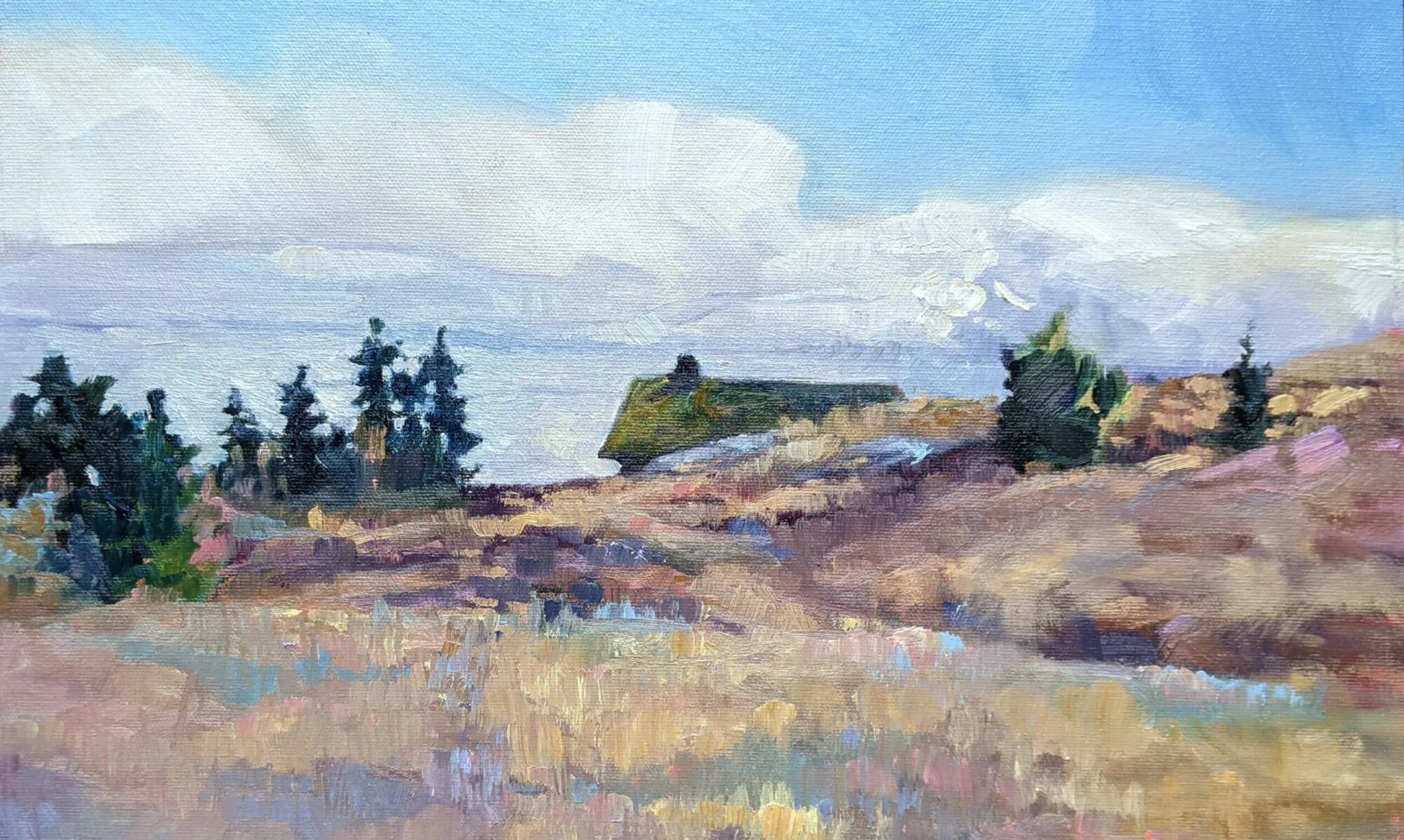Twitter, Instagram and Facebook have replaced print marketing, but how we use them remains the same.
| Full Stop is one of my favorites from 2016. But will a juror like it as much as I do? |
This is the time of year when plein air artists apply to shows. It’s not easy to look at the year’s output and try to guess which three paintings will most impress jurors. But at least it doesn’t involve slides. (For you young readers, those were 35 mm photo transparencies stuck in little plastic frames.)
In the old days, artists took (or, more likely, had a trained professional take) three bracketed exposures of each of their pieces with a film camera. Slide film’s exposure can’t be fixed in the developing process, and it was important that it be right. We repeated that a second time, because we wanted to be sure of our work. That meant that a 36-exposure roll netted exactly six unique images.
 |
| Apple Tree with Swing was painted for Castine Plein Air. |
The film was then sent off to a developing service. When the slides came back, we looked them over on a light table. The keepers were sent back out to be duplicated. All applications—which went off by mail—included a stamped, self-addressed envelope to return those precious slides.
The process was expensive and time-consuming. Whenever I see a $50 online entry fee, I think back to those days and smile.
Yesterday, Keith Linwood Stover of the Cyber Art Show asked, “Would you say that the internet (including social media) has revolutionized your art career?” It has certainly changed my work, but in many ways, the work itself remains exactly the same.
| Flood tide has to be one of this season’s contenders because, well, boats. |
Take marketing. I’ve just spent three days doing an overhaul of my spring marketing efforts. Meanwhile the paint for a project I’m excited about is jelling on my palette. Is that so different? Not really. I remember attending a seminar back in 1980, where we learned that we’d have to spend about half our time on marketing. We’re not doing it with physical portfolios anymore, but we’re still doing the exact same thing.
There’s no real fundamental difference between advertising in a magazine and advertising on social media. It all costs a lot of money.
| Drying Towels was painted at Ocean Park. |
Instagram occupies a similar niche to the art festival as a way to court new fans. The only people who miss doing art festivals are those who’ve never spent time in a hot, humid sales tent or unloaded a van full of unsold merchandise at the end of a terrible run. On the other hand, Instagram requires just as much work.
Plein air events themselves are a modern phenomenon. They started thirty years ago with Plein Air Painters of America, founded in California by Denise Burns. This group held annual paint-outs followed by a show. The format has been copied by countless other groups and events worldwide.
The point of these events is their immediacy, and their growth has been entwined with that of social media. Most well-run events use Twitter, Instagram, and Facebook to keep fans up-to-date on where and what we’re painting. Some maintain an online map telling fans our whereabouts.
How do artists know about these events and their relative prestige? We follow them on the internet, of course. In fact, the whole modern plein air revival is so intertwined with the internet that it’s impossible to separate the two.




